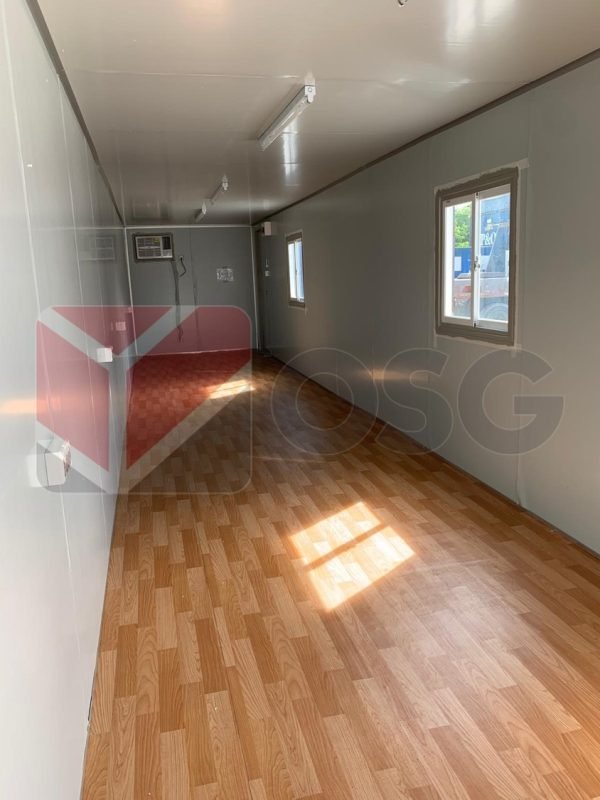How Shipping Containers Are Revolutionizing Sustainable Architecture

In recent years, the quest for sustainable building practices has led architects and builders to explore innovative materials and methods. Among these, the use of shipping containers as building blocks for various structures has gained significant traction. What began as a niche trend has grown into a powerful movement, revolutionizing sustainable architecture by offering a versatile, eco-friendly, and cost-effective solution for a wide range of construction needs.
The Rise of Shipping Container Architecture
Shipping containers, originally designed for transporting goods across the globe, have found a second life as a building material. The concept of repurposing these steel boxes for construction purposes first gained attention in the early 2000s. As concerns about environmental sustainability and resource conservation grew, architects began to see the potential of these containers as more than just temporary structures.
Today, shipping container architecture, or “cargotecture,” is used in a variety of projects, from residential homes and offices to schools, pop-up shops, and even entire apartment complexes. This trend reflects a growing awareness of the need to reduce the environmental impact of traditional construction methods and embrace more sustainable alternatives.
Environmental Benefits of Shipping Container Architecture
One of the primary reasons shipping containers are so appealing in sustainable architecture is their potential to reduce waste. Every year, millions of shipping containers are decommissioned, either because they are no longer fit for transportation or because of oversupply. Repurposing these containers into buildings helps divert them from landfills, where they would otherwise contribute to environmental degradation.
Additionally, using shipping containers in construction reduces the need for new building materials. Traditional construction methods require large amounts of concrete, wood, and steel, all of which have significant environmental footprints. By using existing containers, builders can drastically reduce the demand for these resources, leading to lower carbon emissions and less environmental damage.
Energy Efficiency and Insulation
Another advantage of shipping container architecture is its potential for energy efficiency. While the steel structure of a shipping container might not seem ideal for insulation at first glance, modern building techniques have made it possible to create highly energy-efficient spaces within these containers. Insulation materials such as spray foam, rigid foam, or even eco-friendly options like wool can be applied to the interior and exterior of the containers, ensuring that they retain heat in the winter and stay cool in the summer.
Furthermore, the modular nature of shipping containers makes it easy to incorporate energy-efficient systems such as solar panels, green roofs, and rainwater harvesting. By integrating these features into the design, builders can create off-grid or low-energy buildings that further reduce their environmental impact.
Cost-Effectiveness and Affordability
Shipping container architecture is not only environmentally friendly but also cost-effective. Compared to traditional building methods, constructing with shipping containers can be significantly cheaper. The cost savings come from several factors, including the lower price of materials, reduced construction time, and the ability to build in challenging locations without extensive groundwork.
For instance, a basic shipping container can cost as little as a few thousand dollars, depending on its condition and size. When compared to the price of traditional building materials, this offers substantial savings. Additionally, since shipping containers are pre-fabricated, the construction process is often faster and requires fewer labor hours, further reducing costs.
These cost savings make shipping container architecture an attractive option for affordable housing projects, disaster relief shelters, and temporary structures. In urban areas where space is at a premium, shipping containers can be stacked and arranged in creative ways to maximize the use of limited land, providing a solution to housing shortages and urban sprawl.
Flexibility and Adaptability
One of the most compelling aspects of shipping container architecture is its flexibility. Shipping containers are modular by nature, meaning they can be easily stacked, arranged, and modified to suit a wide range of architectural styles and functions. This adaptability allows architects to experiment with unique designs, creating everything from minimalist homes to elaborate multi-story buildings.
Moreover, shipping containers are highly portable. This means that structures built from containers can be relocated with relative ease, making them ideal for temporary installations, mobile offices, or pop-up retail spaces. This portability also opens up possibilities for creating structures in remote or challenging environments where traditional construction might be impractical.
Challenges and Considerations
While shipping container architecture offers numerous benefits, it is not without its challenges. One of the primary concerns is ensuring that the containers are properly insulated and ventilated to prevent issues such as condensation and heat retention. Additionally, the steel structure of the containers can pose challenges in terms of cutting and welding, which may require specialized skills and tools.
Another consideration is the potential for chemical contamination. Some shipping containers may have been treated with harsh chemicals or used to transport hazardous materials. Before repurposing a container for construction, it is essential to ensure that it is safe and free from harmful substances.
Despite these challenges, the advantages of shipping container architecture far outweigh the drawbacks, particularly when it comes to sustainability.
The Future of Shipping Container Architecture
As the world continues to grapple with the effects of climate change and resource depletion, the demand for sustainable building practices will only increase. Shipping container architecture offers a promising solution to these challenges by providing a way to build eco-friendly, cost-effective, and flexible structures.
Looking ahead, we can expect to see more innovative uses of shipping containers in architecture, as designers and builders continue to push the boundaries of what is possible with these versatile building blocks. Whether it’s creating affordable housing, constructing temporary event spaces, or designing cutting-edge eco-friendly buildings, shipping containers are poised to play a significant role in the future of sustainable architecture.

